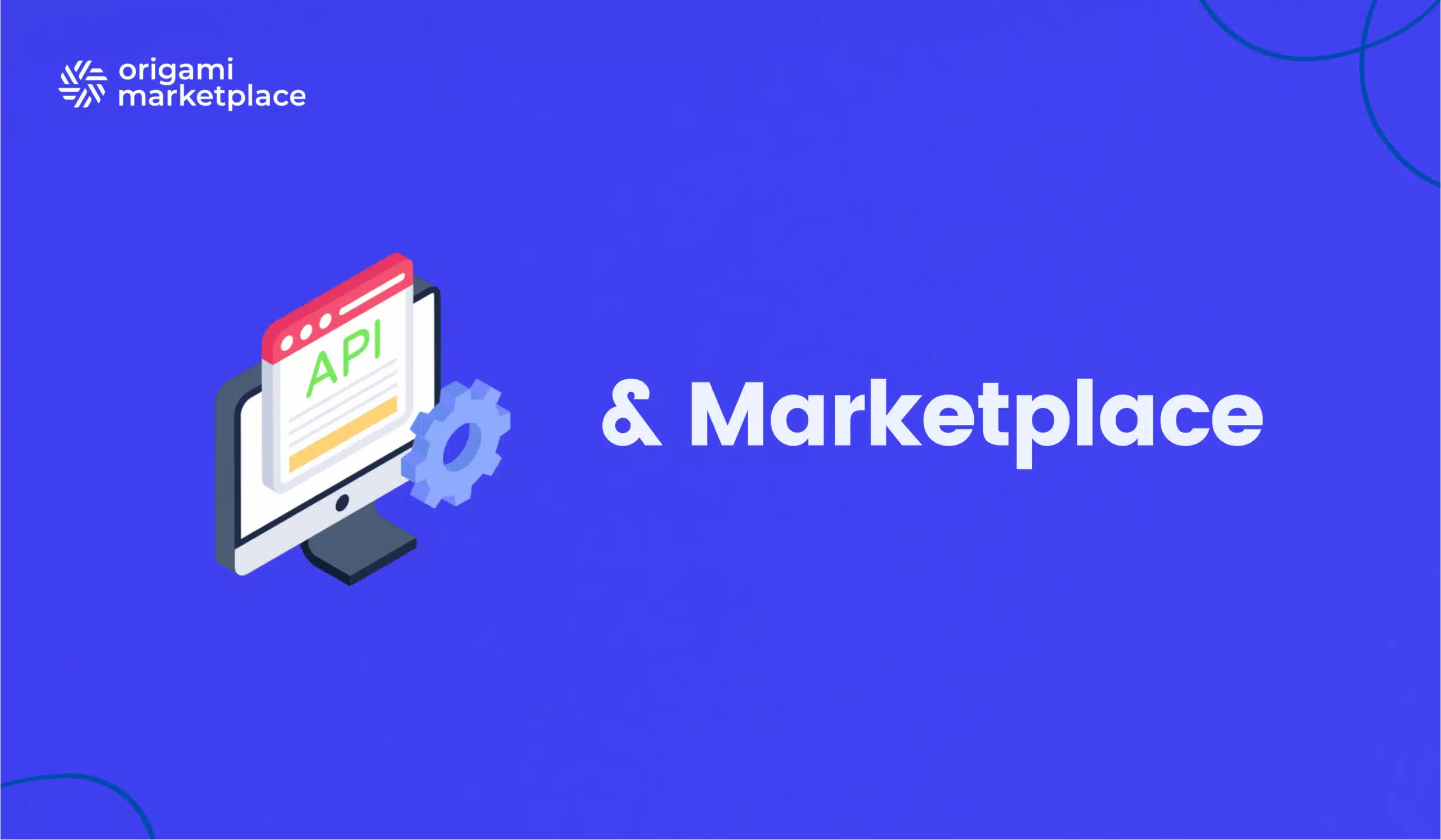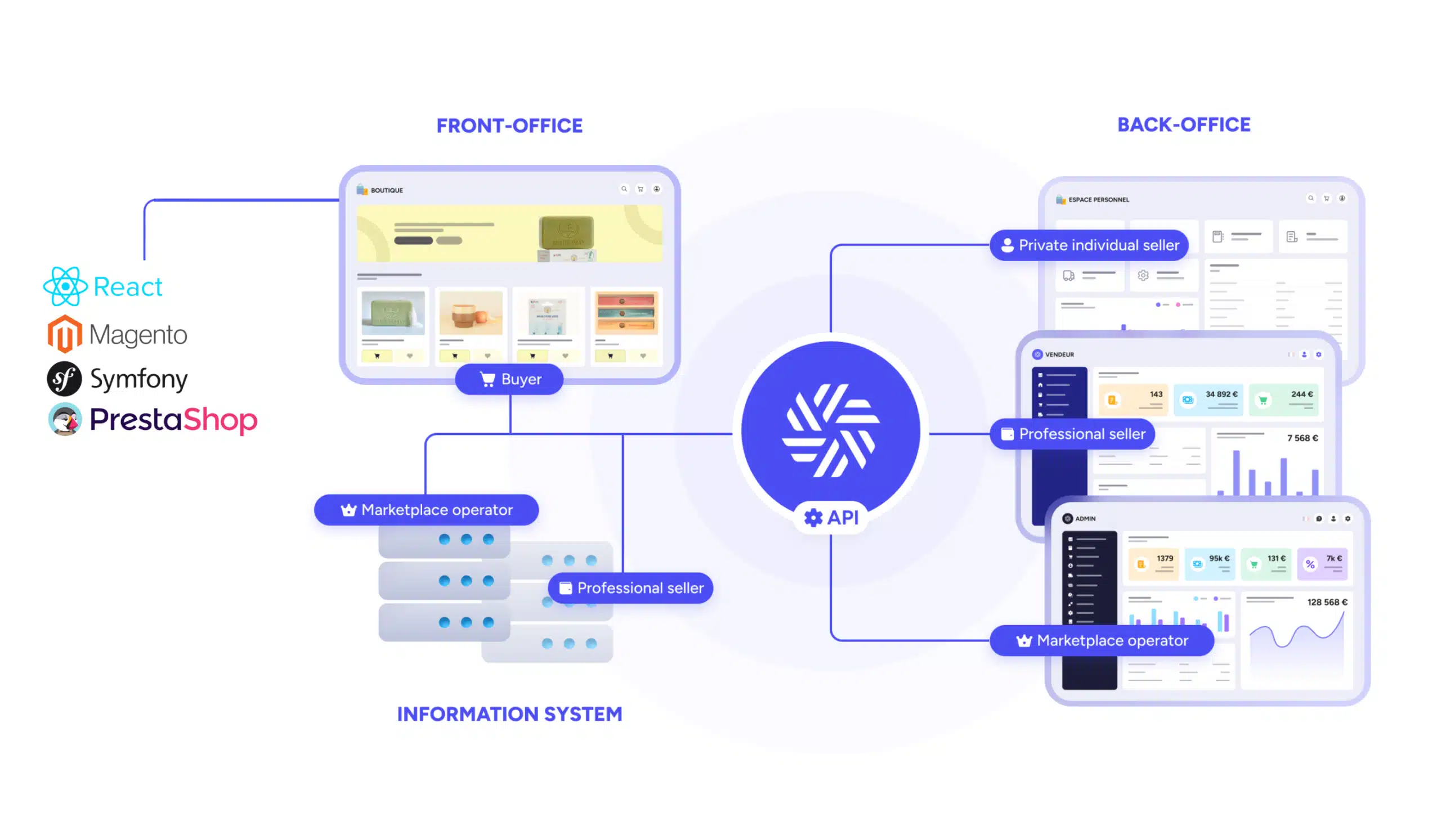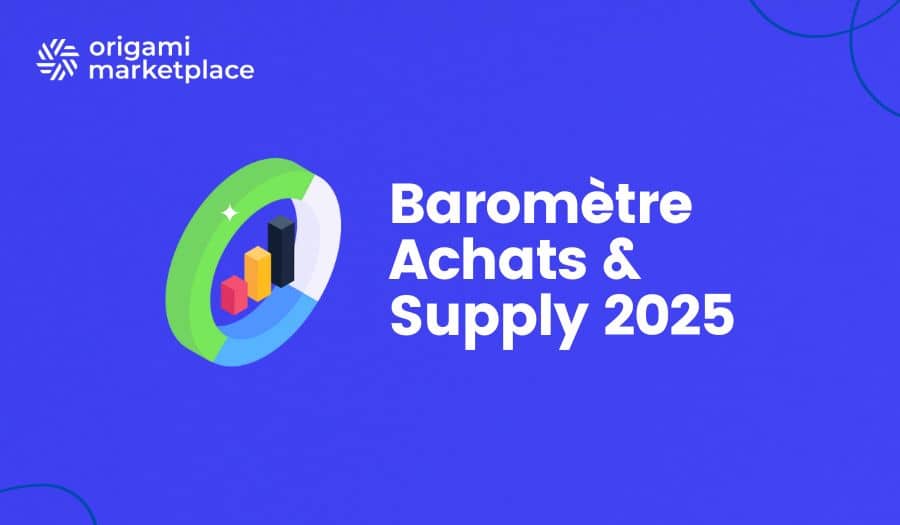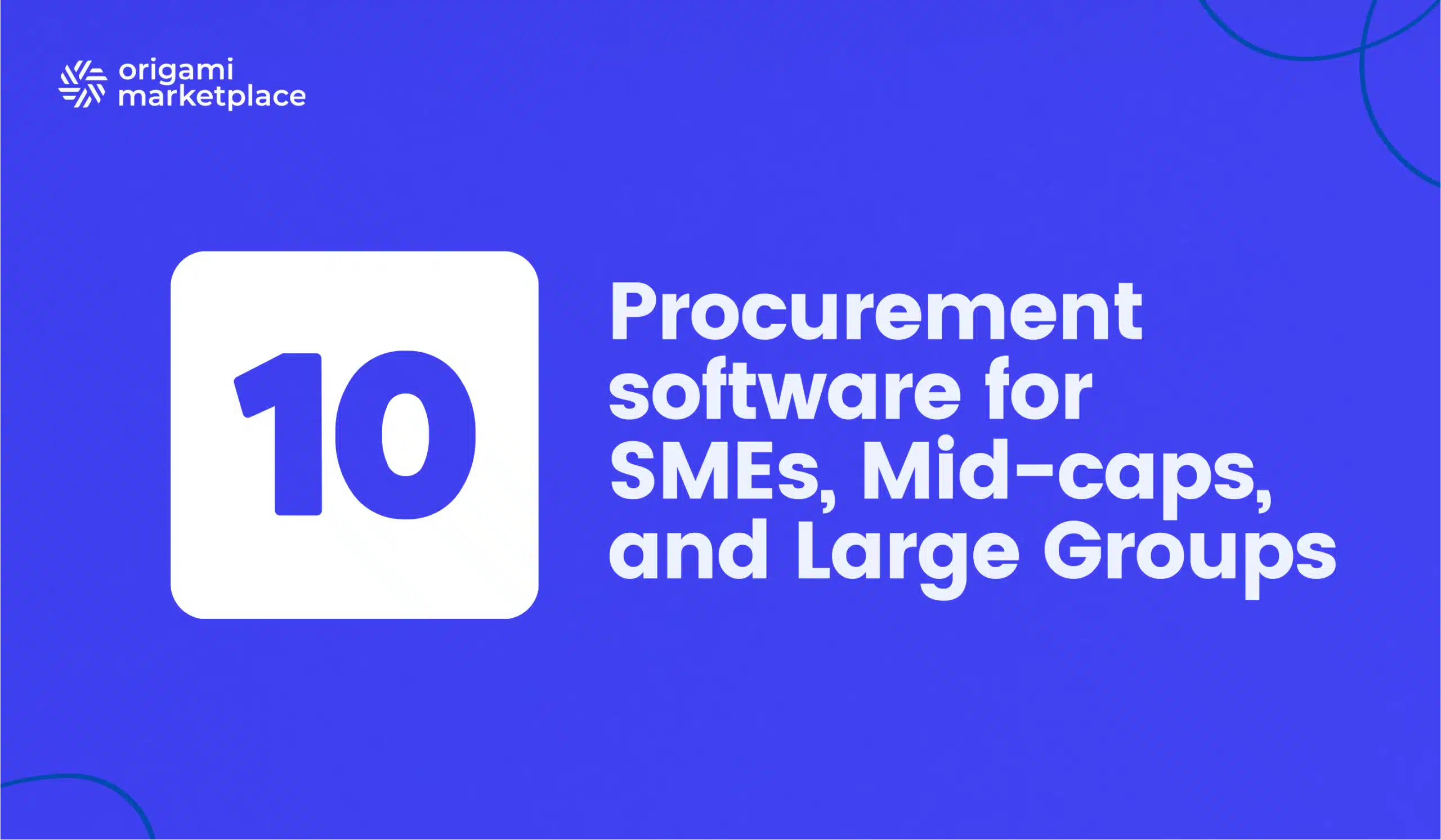Marketplace & API: The essential interface for integration
- Arnaud
- 6 minutes reading

In today’s digital ecosystem, APIs (Application Programming Interfaces) play a crucial role for companies looking to innovate and grow. By leveraging them, it becomes possible to connect multiple software solutions and streamline data exchanges. This level of interoperability is especially strategic in scenarios where the marketplace a truly centralized platform must communicate with various service providers, information systems, and even internal services.
1. What is an API? Definition and key considerations
An API is an Application Programming Interface that enables software, platforms, or services to communicate with each other. In other words, it is a set of rules and protocols defining how these elements can exchange data or functionality.
Why have APIs become so strategic?
- Rapid innovation: Companies can develop and deploy new features faster by leveraging existing services instead of starting from scratch.
- Open ecosystem: Making the API available to partners or customers creates a shared environment for innovation, encouraging collaborative solution building.
- Competitive differentiation: By investing in high-performance APIs, companies can offer products and services that stand out from the competition.
- Facilitated monetization: APIs make it possible to charge for access to certain data or functionalities, thereby creating new revenue streams.
2. API and Marketplace: A winning combination
- Receive and update product catalog, pricing, and stock availability information in real time.
- Manage various payment and delivery options.
- Communicate with billing, logistics tracking tools, and more.
Ready to turn your B2B, B2C, or C2C marketplace vision into reality?
To help you develop the best platform possible, we’ve gathered all the must-have features, key technical considerations, and best practices in a comprehensive document:
Download the Specifications template 🗒
Perfect for smaller or medium-scale projects without a formal purchasing process. It will help you outline your requirements effectively and streamline your selection process.
Download the Request for Proposal template 📒
Ideal for larger, more complex marketplace projects with a formal purchasing department or advanced procurement policies.
3. The API for your software ecosystem (ERP, PIM, OMS, POS, etc.)
- ERP (Enterprise Resource Planning): for handling all of the company’s processes (accounting, invoicing, human resources, etc.).
- PIM (Product Information Management): for centralizing and optimizing product data (descriptions, characteristics, media, etc.).
- OMS (Order Management System): for orchestrating order management across various channels and ensuring rigorous tracking (inventory, shipping, returns).
- POS software: essential for brick-and-mortar locations, they must synchronize sales data in real time with the marketplace.
- CRM (Customer Relationship Management): for centralizing and enhancing customer relationship management (interaction history, lead tracking, marketing campaigns, support, etc.), thus providing a 360° view of the customer journey across all sales channels.
- Information is automatically updated in every application.
- Critical data (sales, inventory, returns, and more) is shared and consolidated, simplifying analysis and decision-making.
- Workflows are automated, eliminating cumbersome manual tasks and reducing the risk of errors.
4.The API at the heart of your integration strategy
What Is API Integration?
API integration involves connecting two or more applications through a programming interface so they can exchange data, process requests, or automate certain tasks.
For instance, in a marketplace context, an API might:
- Transmit a customer’s order to the ERP system for accounting and logistics updates.
- Update a merchant’s inventory in real time within the PIM.
- Trigger the creation of a preparation note in the OMS.
Key Benefits of API Integration
- Automation and time savings: Fewer manual tasks, fewer duplicates, and fewer errors.
- Security and reliability: Modern APIs (REST, SOAP, OAuth 2.0, etc.) use encryption protocols and robust authentication mechanisms.
- Scalability: An API-based architecture allows you to add new features without overhauling the entire infrastructure.
- 360° visibility: By centralizing data in a single repository (for instance, through an ERP or PIM), you gain a comprehensive view of your operations for reporting and analysis.
5. The advantages of the Origami Marketplace API

The Origami Marketplace API is built on proven, easy-to-implement development standards for your business:
- JSON REST API: A data format widely adopted by the technical community, ensuring interoperability.
- OAuth 2.0 authentication: A secure protocol that guarantees controlled access to resources.
- Clear and detailed documentation: Each endpoint is described with integration examples.
- Native pagination, filtering, and sorting features: These options make it easier to manage the marketplace and extract data.
By choosing a robust, scalable ecosystem, you ensure the ability to quickly integrate new services (payments, logistics, inventory management, etc.) and adapt your platform to changing market demands.
- Initiator: Identifies a need or an opportunity for improvement and communicates it to the relevant stakeholders. This can be anyone within the organization.
- Buyer: Responsible for managing the acquisition of the product, service, or solution. This might be a purchasing manager or department head who validates the transaction.
- Decision-maker: Holds the final authority to approve the purchase. This role is often assigned to a senior executive, a development manager, or a financial officer.
- Influencer: Internal or external experts whose recommendations can guide the decision. This includes consultants, department heads, or members of a purchasing committee.
- Gatekeepers: Control access to information within the company. They may be administrative assistants, document managers, or other individuals who filter communications.
- User: The person who will use the product or service once acquired. Their feedback is often crucial in validating the choice of product to meet operational needs.
Each of these stakeholders plays a crucial role in ensuring that the purchasing decision meets the company’s requirements while streamlining the decision-making process.
Take the time to precisely map out the roles and needs of each stakeholder within your organization before deploying the API. This process allows you to better tailor your communication and support resources to each individual. For example, the decision-maker will be primarily interested in the strategic and financial benefits, while the end user will need hands-on training and clear technical support. A segmented, targeted management approach not only ensures better API adoption, but also optimizes return on investment for the entire company.

Antoine Mantel
→ Connect with our marketplace solutions expert.
👋 Hello, future marketplace operator!
Discover how the Origami Marketplace API and its partner network can transform your business regardless of its size through an innovative, marketplace-based solution.


